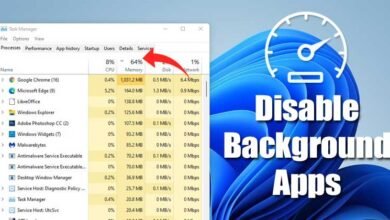How to Avoid Eye Strain from Screens

Discover effective strategies to prevent eye strain from screens. Learn how to alleviate discomfort, reduce blue light exposure, and improve overall eye health. We’re spending more time than ever in front of screens – be it computer monitors, smartphones, tablets, or TVs. While these devices have made our lives more convenient, they also come with the downside of potential eye strain. Eye strain, or computer vision syndrome, can cause discomfort and headaches and affect productivity. However, you can implement several effective strategies to prevent and alleviate eye strain. This article will explore these techniques and provide actionable steps to keep your eyes comfortable and healthy.
Understanding the Causes of Eye Strain From Screens
Before diving into the remedies, it’s crucial to understand why prolonged screen time leads to eye strain. Staring at screens for extended periods can result in:
Read More: The Ultimate Guide to a Healthy Lifestyle
Blue Light Emission
One of the primary contributors to eye strain is the emission of blue light from screens. This high-energy visible (HEV) light has a short wavelength and emits a bright, bluish glow. While it’s a natural component of sunlight and regulates our sleep-wake cycle, excessive exposure to artificial blue light from screens can pose potential risks to our eyes and overall well-being.
How Blue Light Affects Our Eyes
Blue light penetrates deep into the eye and can potentially cause damage to the retina over time. Prolonged exposure to blue light, especially during evening hours, can disrupt our circadian rhythm and interfere with our ability to fall asleep. This is because blue light suppresses melatonin production, a hormone that helps regulate sleep.
Strategies to Reduce Blue Light Exposure
- Blue Light Filters: Consider using screen protectors or specialized blue light-filtering glasses. These tools can help mitigate the impact of blue light on your eyes by reducing its intensity and filtering out a portion of the harmful wavelengths.
- Night Mode: Many devices offer a night mode feature that adjusts the screen’s color temperature to emit warmer tones during the evening. This helps minimize the disruptive effects of blue light on your sleep pattern.
- Digital Devices with Blue Light Filters: Some smartphones, tablets, and laptops now come with built-in blue light filters that you can activate to reduce blue light emission. Check your device settings to see if this feature is available.
- Limit Screen Time Before Bed: To improve sleep quality, limit screen time to an hour or two before bedtime. Relaxing activities such as reading a physical book or practicing meditation can be more conducive to falling asleep.
- Opt for Warm Lighting: In your living space, opt for warm, ambient lighting in the evening. Use dimmer switches or warmer light bulbs to create a soothing atmosphere that won’t interfere with your sleep hormones.
Reduced Blinking
When we’re engrossed in our digital devices, whether working on a computer, scrolling through social media on a smartphone, or binge-watching our favorite shows, we tend to blink less frequently. This seemingly minor adjustment in our blinking behavior can significantly impact our eye health and comfort.
Why Blinking Matters
Blinking serves as a natural mechanism to keep our eyes moisturized and protected. Each blink spreads a thin layer of tears across the eye’s surface, preventing dryness and maintaining clarity. However, prolonged screen time can lead to reduced blinking, resulting in dry, irritated eyes.
Strategies to Counter Reduced Blinking
- Conscious Blinking: Make a conscious effort to blink more frequently when using digital devices. While it may feel forced initially, it can help prevent your eyes from drying excessively.
- 20-20-20 Rule: Incorporate the 20-20-20 rule as a reminder to blink and rest your eyes. Every 20 minutes, take a 20-second break to look at an object about 20 feet away. This not only encourages blinking and a quick opportunity for your eyes to relax.
- Artificial Tears: Over-the-counter artificial tear solutions can provide much-needed eye moisture. Consider using them when you’re experiencing dryness or discomfort.
- Hydration: Drink an adequate amount of water throughout the day. Proper hydration supports tear production and helps prevent dry eyes.
- Blinking Exercises: Practice deliberate blinking exercises. Please close your eyes gently for a few seconds and then open them wide, blinking rapidly for about 10 seconds. This can help spread tears and refresh your eyes.
Screen Glare and Reflections
Screen glare and reflections can be a common annoyance when using digital devices. These visual disturbances make it difficult to see the screen clearly and contribute to eye strain as our eyes work harder to focus on the content.
Understanding Screen Glare
Screen glare occurs when external light sources, such as sunlight or bright indoor lights, reflect off the surface of your screen. This creates a mirror-like effect that can be distracting and uncomfortable for your eyes.
Minimizing Screen Glare and Reflections
- Adjust Lighting: Position your screen to minimize direct exposure to light sources. Consider placing your device perpendicular to windows or light fixtures to reduce glare.
- Use Curtains or Blinds: If glare from windows is a persistent issue, consider using curtains or blinds to control the amount of incoming light.
- Anti-Glare Filters: Anti-glare filters are screen protectors that reduce reflections and minimize glare. They can be particularly useful for laptops and computer monitors.
- Adjust Screen Settings: Most devices allow you to adjust the screen’s brightness and contrast settings. Experiment with these settings to find a balance that reduces glare while maintaining comfortable visibility.
- Polarized Sunglasses: If you’re using a device outdoors, consider wearing polarized sunglasses to reduce glare from the sun.
- Positioning: Tilt your screen slightly to change the angle at which light reflects off the screen. This can help redirect glare away from your eyes.
Importance of Reducing Glare
Reducing screen glare enhances your visual comfort and reduces the strain on your eyes. When your eyes constantly adjust to glare and reflections, they work harder, which can lead to fatigue and discomfort.
Tips to Prevent Eye Strain
Now that we know the culprits let’s explore effective strategies to avoid eye strain:
The 20-20-20 Rule
Every 20 minutes, take a 20-second break and focus on something 20 feet away. This simple practice relaxes eye muscles and reduces strain.
Proper Screen Setup
Position your screen at eye level, about an arm’s length away. Adjust the screen brightness and text size for comfortable viewing.
Regular Eye Exercising
Perform simple eye exercises to improve focus and reduce fatigue. Try rolling your eyes, blinking rapidly, and massaging your temples.
Ergonomic Workspace
Invest in an ergonomic chair and desk setup. Maintain good posture to prevent neck and back strain, which can contribute to eye discomfort.
Blue Light Filters
Use screen protectors or specialized glasses that filter out blue light. This minimizes its impact on your eyes and sleep cycle.
Ambient Lighting
Ensure your workspace is well-lit to reduce the contrast between the screen and its surroundings. Avoid harsh lighting that creates reflections.
Adjust Display Settings
Tweak your screen’s contrast, brightness, and font settings to make content easier on the eyes. Enable “night mode” for warmer tones during the evening.
Stay Hydrated
Proper hydration supports tear production, reducing dryness and discomfort. Drink an adequate amount of water throughout the day.
Digital Detox
Take regular breaks from screens, especially before bedtime. Engage in offline activities to give your eyes a chance to rest.
Read More: Healthy Eating Habits: Pakistani Cuisine Edition
Conclusion
Adopting these practices into your daily screen routine can significantly diminish the risk of eye strain and elevate your overall well-being. It’s vital to recognize that your eyes require care and attention, especially in our screen-driven world. Prioritizing eye health through these straightforward yet effective strategies can lead to more comfortable and enjoyable screen experiences.
FAQs: Eye Strain from Screens
Can eye strain lead to permanent damage?
No, eye strain usually doesn’t result in permanent damage. Nevertheless, if neglected, it may progress into more severe conditions. Hence, it’s crucial to address it promptly.
Is there an optimal screen distance?
Aim to keep your screen about an arm’s length, approximately 20 to 24 inches away. Adjust the distance to what feels most comfortable for your eyes.
Are all types of blue light harmful?
Not all forms of blue light are harmful. Prolonged exposure to blue light from screens can disrupt your sleep pattern and strain your eyes. However, natural blue light from the sun is beneficial during daylight hours.
Can I replace the 20-20-20 rule with longer breaks?
While longer breaks can be helpful, the 20-20-20 rule offers quick and effective relief. It’s a valuable practice to incorporate into your routine for maintaining healthy eyes.
How do I know if I need blue light-filtering glasses?
Blue light-filtering glasses could be beneficial if you spend a significant amount of time in front of screens and experience symptoms of digital eye strain. Consult an eye care professional for personalized advice.











